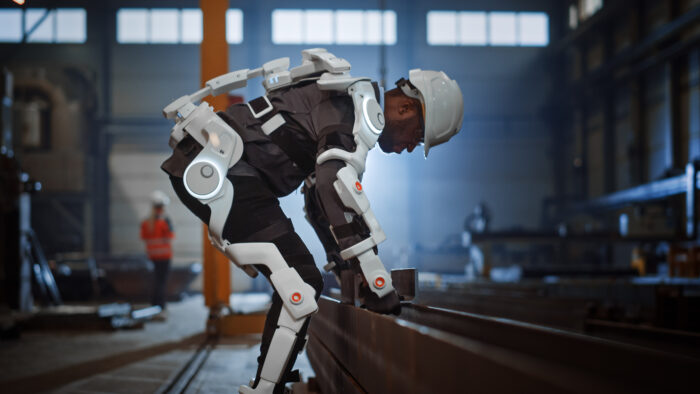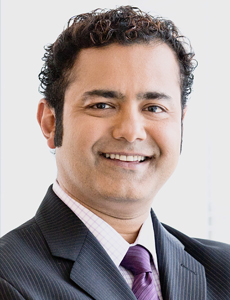Transform Workplace Health: The Benefits of Wearables for Injury Prevention & Recovery

Big data — massive data sets of individual and demographic information gathered for purposes that range from marketing to law enforcement — is the name of the game for any company on the cutting edge, in workers’ comp or other areas of risk management.
However, the value of that data and how it’s collected is the X factor. The common expression in tech — garbage in, garbage out — captures the difficulty inherent in making use of many data points to drive change. This is a topic of keen interest for the National Comp conference, and can be found on this year’s program agenda.
William Zachry, Board Member of State Fund of CA, Gregory Hamlin of Berkley Industrial Comp and Raja Sundaram of Plethy Inc. will present How Wearable Tech and Virtual Care Are Transforming Claims, From Engagement to Outcomes on Sept. 20th. The speakers shared their thoughts with Risk & Insurance in advance of the presentation.
Wearables, which comprise everything from watches to devices that purport to correct posture, could provide a new wave of early intervention data for claims, especially in the musculoskeletal arena.
According to a report from Grand View Research, the global wearable technology market was valued at $61.3 billion in 2022 and is expected to expand at a compound annual growth rate of 14.6% from 2023 to 2030.
For risk managers, the opportunity may be clear, but the value isn’t, so the need for data on the data becomes paramount.
Educating Injured Workers Is Part of the Process
“The value of the data collected by wearables depends on the injury, the person and the recovery process,” said Zachry, board member of State Fund of California.
“There’s a lot of medical technology out there that’s well-engineered, but it’s not necessarily easy for the person to use it. Some of the virtual reality stuff is extraordinarily impressive, but getting blue-collar workers to use it is somewhat problematic.”
Zachry gave the example of using a smartwatch to monitor someone’s heart rate, transmitting their EKG data to a doctor and getting them to the hospital based on that doctor’s advice.
“That works because the person knows how to use it. A lot of people don’t necessarily have that knowledge.”
The knowledge gap issue for injured workers is potentially one of design as well as simple lack of experience, and some companies claim to have filled that gap with smart solutions that directly address injured worker behavior.

Raja Sundaram, CEO of Plethy Inc.
Sundaram, CEO of Plethy Inc., a company that produces wearables to encourage compliance in at-home exercise programs, cited injured worker self-awareness (along with personalized care plans and quicker intervention for cost reduction) as one of the key factors around which the tech is built.
“Injured workers can see their recovery progression,” he said.
“The majority of musculoskeletal recovery occurs at home, and only 35% of patients adhere to their care plan. If a patient is engaged in their recovery at home, all is well. If not, recovery is delayed, difficult and costly. Injured workers need support and motivation in following their care plan at home or on the go. The right tools can empower injured workers by giving them the necessary motivation.”
Wearables Doing Wonders
Sundaram claims that with Recupe, the app tied to the wearable, injured workers regained full function and full return-to-work capability 25 days faster than injured workers not using Recupe during their recovery after a knee procedure. The app also tracks pain, and he cited data that indicated a 41% reduction in one month.
And wearables can be much more sophisticated.
A 2019 NCCI review of the wearables market for workers’ comp cited recovery uses such as an exoskeleton for a police officer suffering from a spinal cord injury as examples of innovation in the space.
However, the wearables market in workers’ comp is dominated by safety wearables — devices that use geolocation to get help to an injured person faster on a large job site, for example, or sensors that correct posture or warn workers when they need to take a break in the heat. These uses are backed by data.
One report from actuarial firm Perr & Knight, which assessed a posture wearable from a maker called Kinetic, found that “manufacturing industry frequency of strain and sprain claims declined 49.5%” and “the incidence of frequency of strain and sprain claims declined by 58.8%” after using the device across 2.1 million hours.
Health monitoring, and especially recovery, are distinct from safety uses and are still relatively cutting-edge, meaning that workers’ comp claims leaders need to assess both the potential benefit to injured workers and the effect on frontline claims staff’s daily tasks.

Gregory Hamlin, senior vice president of claims, Berkley Industrial Comp
Hamlin, senior vice president of claims at Berkley Industrial Comp, a Plethy customer, indicated that the reporting structure Plethy enables has provided an overall benefit to his team, which deals with a larger number of high-dollar catastrophic injuries due to their book of business.
“The adjusters get reports on a regular basis, and then I get a weekly update on every injured worker in the program and how they’re progressing. Those reports provide a lot of data like mood and compliance, how they’re doing with the exercises.”
Early intervention benefits extend beyond daily reports, though.
For Zachry, consistent data on recovery allows for faster reaction time on the operations side of the claim as well.
“If you know how the recovery is going, you can do a more accurate job of reserving,” Zachry explained.
“If there’s a problem, you should reserve more, and if you reserve more, you get more scrutiny on that file and it allows the claims manager to intervene earlier. It may be, for instance, an opportunity for assignment of a medical management nurse if there wasn’t one before.”
Always Looking Forward
Ultimately, the struggle to get workers back to work in a system rife with problems that are similar to those of the general health market (and that differ from state to state) creates opportunities for technology — including wearables — to enter, disrupt and hopefully benefit the injured worker.
“In health care in the United States, there are really two models. The ‘Do it for you’ model, like in a hospital, and then the ‘Do it yourself’ model, which is like when you get discharged and become responsible for everything,” said Hamlin.
“I think there’s a gap, the ‘Do it with you’ model, which doesn’t really exist. That’s a huge problem when you’re talking about someone’s recovery, because if you go from having everything done for you and then having to figure it all out, most of us don’t have the skill sets or the motivation to do all of those things.”
Hamlin explained that frozen shoulders are the result of a common failure that occurs in that gap. Less tangible issues, such as mental health deterioration, may also become costly; as he argues, anything that can ease the process is a positive.
“Technology is doing amazing things and I feel strongly that in workers’ compensation, gaining cooperation results in better outcomes,” he explained.
“If people are engaged in their own recovery and see us as a partner rather than an adversary, we’ll see better outcomes.” &
 Want to learn more about wearables in the workplace? Attendees at National Comp 2023 will have the opportunity to hear from industry experts on the latest tips and tactics to integrate this technology into their safety plans while also addressing educating employees on their importance, use and results.
Want to learn more about wearables in the workplace? Attendees at National Comp 2023 will have the opportunity to hear from industry experts on the latest tips and tactics to integrate this technology into their safety plans while also addressing educating employees on their importance, use and results.










